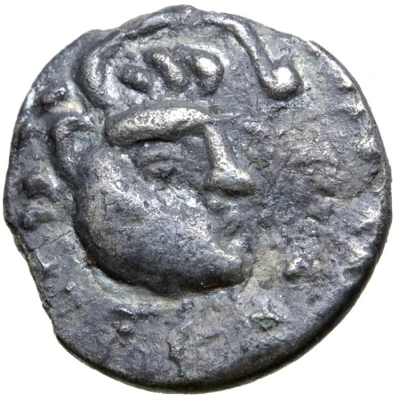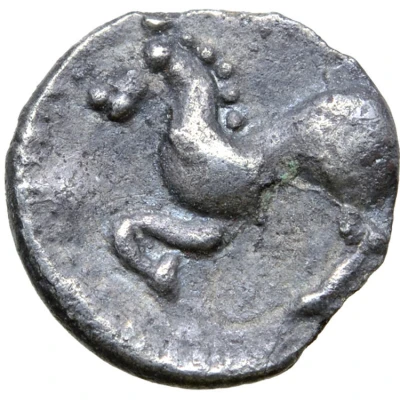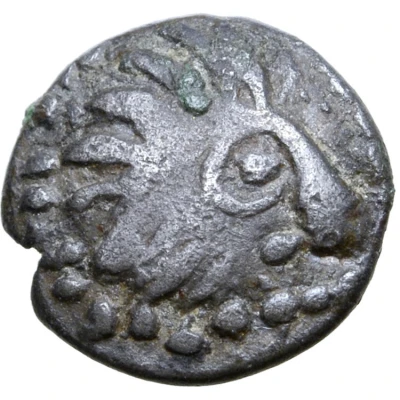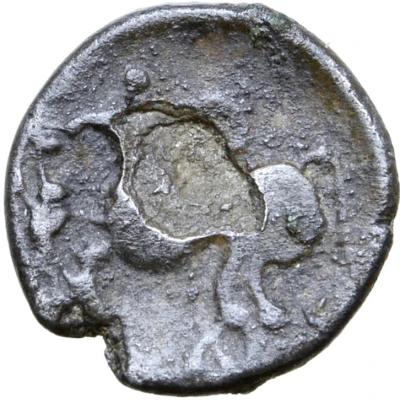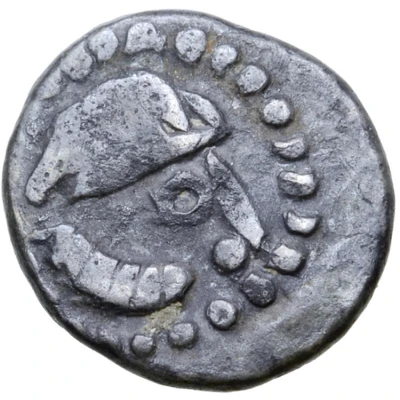
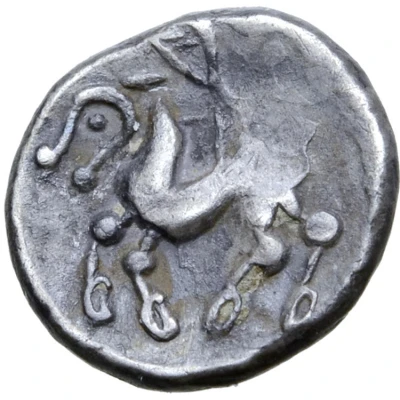

© Roma Numismatics Limited
Obol Kapostal Type 200 BC - 1 BC
| Silver | 0.49 g | 9 mm |
| Issuer | Hercuniates (Central and Eastern European Celts) |
|---|---|
| Type | Standard circulation coin |
| Years | 200 BC - 1 BC |
| Value | 1 Obol (⅙) |
| Currency | Drachm |
| Composition | Silver |
| Weight | 0.49 g |
| Diameter | 9 mm |
| Shape | Round (irregular) |
| Technique | Hammered |
| Orientation | Variable alignment ↺ |
| Demonetized | Yes |
| Updated | 2024-10-09 |
| Numista | N#191662 |
|---|---|
| Rarity index | 100% |
Reverse
Stylised rider on horseback to left.
Comment
Examples of this type:• Example #1 (0.49g, 9mm, 12h; Good Very Fine) - In main image
© Image courtesy of Roma Numismatics Limited
◦ Ex-Hermann Lanz Collection; published in Kostial #828;
◦ Exhibited by the Staatlichen Münzsammlung München at the 1997 International Numismatic Congress in Berlin; at the Berliner Bank also in 1997; also exhibited at the Luitpoldblock Palmengarten, Munich in 2003 (exhibition #141[reverse]).
◦ Auctioned by Roma Numismatics Ltd, Auction XVIII, 29 September 2019, lot 203. Sold for 80 GBP.
• Example #2 (0.41g, 9mm, 12h; Very Fine, toned)
© Image courtesy of Roma Numismatics Limited
◦ Ex-Hermann Lanz Collection; published in Kostial #829;
◦ Exhibited by the Staatlichen Münzsammlung München at the 1997 International Numismatic Congress in Berlin; at the Berliner Bank also in 1997; also exhibited at the Luitpoldblock Palmengarten, Munich in 2003 (exhibition #141[obverse]).
◦ Auctioned by Roma Numismatics Ltd, Auction XVII, 28 March 2019, lot 216. Sold for 85 GBP.
Interesting fact
One interesting fact about the Obol coin from Hercuniates is that it features a unique blend of Celtic and Greek influences in its design. The obverse side of the coin depicts a stylized horse, which was a symbol of strength and power in Celtic culture, while the reverse side features a rendition of the Greek goddess Athena, reflecting the cultural exchange and influence of the neighboring Greek cities. This blending of styles and motifs highlights the diverse cultural heritage of the Celts in Central and Eastern Europe during this time period.
